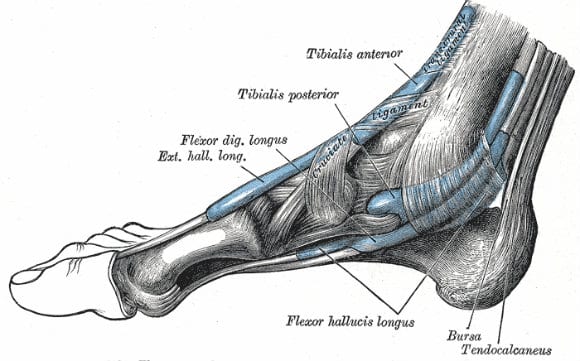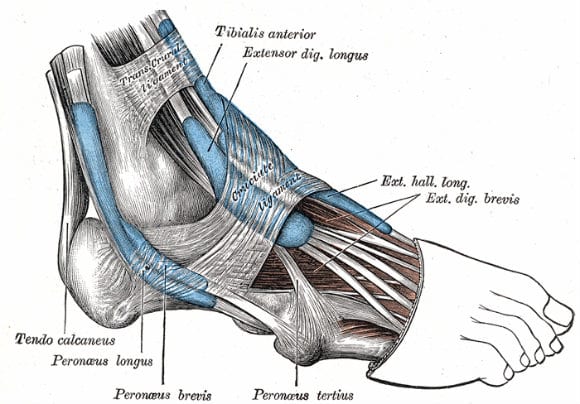By the healthiergang writer , student in Pharmacy.
Tibial muscles
The anterior tibialis and posterior tibialis are leg muscles; as it is easy to guess from the name, they are attached to the tibia and while the first is an anterior muscle, the second is a posterior muscle.
The anterior tibialis is responsible for the adduction of the foot and its dorsal flexion; it is involved in turning the foot inwards (supination).
The posterior tibial, on the other hand, is responsible for plantar flexion of the foot, and for supporting the plantar arch.
They are fundamental muscles that perform different functions. In this article we will pay particular attention to the anterior tibialis, which is important in locomotion and balance.
Anatomy
The anterior tibialis muscle “arises from the crural fascia from the interosseous membrane and from the lateral condyle of the tibia.
It runs along the anterolateral edge of the tibia alongside the extensor longus muscle of the fingers; at the distal third of the leg it continues in a tendon that runs down and medially, passes deeply to the upper and lower retinacles of the extensor muscles and ends up inserting itself on the lower part of the medial surface of the first cuneiform and on the base of the first metatarsal. It is innervated by the deep peroneal (Wikipedia, https://it.wikipedia.org/wiki/Muscle_tibiale_anterior) ".
Put simply, that's it sturdy band that appears next to our shins, more noticeable if we rotate and lift the foot.
The posterior tibialis is instead "hidden" below the gastrocnemius and soleus.
How Important Are They?
It's a very underrated muscle, especially in bodybuilding, probably due to its reduced aesthetic impact, but highly regarded in the world of running, athletics, dance and in all other sports in which running and jumping play a fundamental role, such as rugby, football , tennis, volleyball, etc ...

Many of the inflammatory processes affecting the plantar arch and the tibial area are due precisely to imbalances between the various muscles present in these districts (in terms of strength and development); other causes can be: incorrect posture, unsuitable footwear, too intense activity in relation to our current physical preparation, overweight and obesity.
These inflammations are probably well known to runners, footballers and dancers.
Usually they fight with rest and ice, anti-inflammatory drugs, braces and physiotherapy.
In any case it is always better to prevent them, by carrying out workouts at the height of our abilities, and above all with progression, inserting some series for the tibialis in our training, and concluding with the appropriate stretching.
How to train them?
To "isolate" the anterior tibialis muscle we can resort to various exercises, among which probably the best are:
- Adduction and flexion with rubber bands;
- Reverse calf (calf inverso).
1. Adductions
To execute the adductions and flexions with rubber bands it is enough to tie the latter to a solid support (eg a backrest), at the right distance and angle, and then fix them to the tips of the feet; dorsal adductions or flexions are performed, first using softer elastic bands, and then passing over time to more tense ones. They can be performed both standing, sitting or lying down.
2. Reverse Calf
The reverse calf is performed in an almost analogous manner to the "standard" calf rise, with the difference that instead of resting the toes on the chosen support (for example the step of a ladder or a sturdy step), the heels are supported, therefore the back of the foot; consequently we will not have the rise in front, but behind us.
Correctly positioned you raise and lower yourself alternately with complete and - above all - controlled movement.
To increase the overload in the reverse calf we can 1) perform it at the smith machine, 2) perform it at the calf machine, if the structure of the machinery allows it, and 3) use rubber bands to wrap at the tips of the feet.
Alternatively, it can be performed one leg at a time, using a dumbbell, taking care to maintain balance with the help of the free arm. It is an exercise that is anything but simple to perform, especially the first few times, due to the difficulty in maintaining balance correctly.

In training the tibial muscles it is essential to perform a complete and controlled movement. The ways in which the exercise is performed should be alternated within the same training session or on different days.
In fact, we should both perform series with a high volume of repetitions, and with a relatively fast execution speed, and series with a reduced number of repetitions, slow, but with a significant TUT (Time Under Tension), greater than 40 seconds, concentrating in particular in the highest position of the movement (with the toes pointing upwards) remaining there for at least 2 seconds, before continuing the movement.
If this is your first time doing these exercises, do it with caution, with the minimum possible overload, without absolutely failing.
The tibialis are involved in the various calf rise movements and in the main multi-joint exercises for the lower limbs, such as lunges, deadlifts and squats. Running, jumping, facing a staircase or an important difference in height are important movements that stimulate the tibial muscles; swimming with fins would also emphasize the work of these muscles.
Let's not forget about stretching! The best exercise is simply to sit on your heels, keeping your back straight and if necessary slowly lifting your knees, one after the other, holding the position for several seconds. The normal stretching we reserve for the calves can prove to be just as useful.
Conclusions
The tibial muscles are too important to be neglected, especially if our sport is based on running, or in any case on an important use of the legs.
To be more efficient, and above all to prevent injuries, it is therefore essential to train these muscles, starting with the advice given in this article.


























